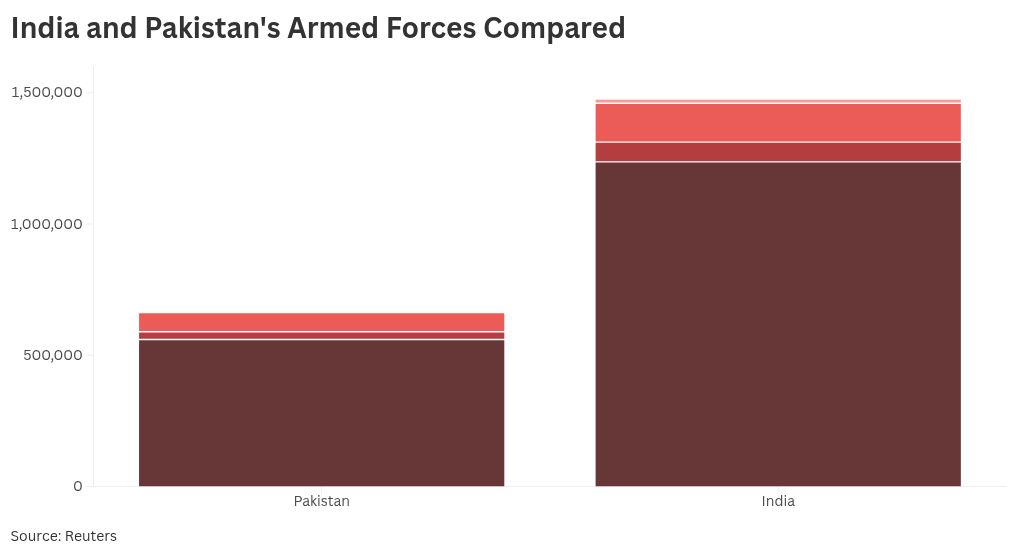Simmering tensions between India and Pakistan are fueling concerns about the potential for a nuclear conflict between the two South Asian nations. Here is a look at how their militaries compare.
Newsweek reached out to India and Pakistan’s foreign ministries for comment via email.
Why It Matters
India-Pakistan relations hit a boiling point after an April 22 attack in Pahalgam, a town in Indian-controlled Kashmir, a disputed region divided by a de facto border called the Line of Control. The countries have fought three wars over the territory.
The victims were mostly Indian tourists visiting a well-known beauty spot. India called it a “terror attack” and accused Pakistan of being involved, which it has denied. The Resistance Front—an offshoot of Pakistan’s Lashkar-e-Taiba terrorist organization—claimed responsibility for the attack, accusing the tourists of attempting to “settle illegally.”
On Wednesday, Pakistan’s Information Minister Attaullah Tarar wrote on X (formerly Twitter) that Pakistan has “credible intelligence” India will launch a military strike within the next 24 to 36 hours.
What to Know
The growing tensions between India and Pakistan are fueling concerns about the potential for nuclear war, as each country has nearly 200 nuclear warheads. India has about 172, while Pakistan has roughly 170, according to data from the Arms Control Association. In 1998, India adopted a “no first use” policy for nuclear weapons, meaning it would only use them in retaliation, but has reconsidered it in recent years. Pakistan has no such policy.

A 2019 study co-authored by Rutgers University says that 100 million people could die immediately if the two countries engaged in nuclear war—and even more could die from mass starvation if the conflict were to trigger a nuclear winter.
India also has an advantage in the number of active military personnel. It has 1,237,000 people serving in the army, 75,500 in the navy, 149,000 in its air force and 13,350 in its coast guard, reported Reuters. Pakistan, meanwhile, has 560,000 in its army, 70,000 in its air force and 30,000 in its navy.

India has 9,743 pieces of artillery and 3,740 battle tanks, while Pakistan has 4,619 artillery pieces and 2,537 battle tanks, Reuters reported. India has 730 aircraft and 16 submarines while Pakistan has 452 aircraft and eight submarines, according to the report.
Additionally, India has a reserve of 1,155,000 troops, while Pakistan’s stands at 550,000, according to the organization Global Firepower.
What People Are Saying
Tammy Bruce, a spokesperson for the State Departmentsaid: “We are reaching out to both parties and telling them, of course, to not escalate the situation. We, of course, are encouraging all parties to work together for a responsible solution. The world is watching this.”
Attaullah Tarar, Pakistan’s Broadcasting and Information Minister on Wednesday: “Pakistan reiterates that any such military adventurism by India would be responded to assuredly and decisively. The international community must remain alive to the reality that the onus of escalatory spiral and its ensuing consequences shall squarely lie with India.”
What Happens Next
The global community has voiced concerns about escalating tensions in South Asia and has encouraged them to engage in diplomatic measures to avoid a wider conflict. But the path to de-escalation remains unclear at this point.
The post How India and Pakistan’s Armed Forces Compare, as Nuclear Fears Grow appeared first on Newsweek.




